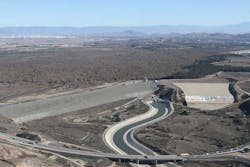Using models to simulate reservoir operations under FIRO conditions, the assessment found that temporarily storing water to higher elevations can enhance groundwater recharge. The improvements in atmospheric river forecasts show high reliability at up to five days’ lead time, which allows dam operators to make timely water releases and could enhance flood-risk management.
“Completion of the preliminary viability assessment for Prado Dam is an important milestone for the U.S. Army Corps of Engineers as it builds our understanding of how to safely and effectively implement this important policy change across the agency,” said Cary A. Talbot, a division chief at the U.S. Army Engineer Research and Development Center and FIRO program manager for the Corps. “FIRO pilot sites like Prado Dam add to our agency’s ability to find a better balance between flood-risk management, water supply and ecological benefits, and makes us more resilient for the challenges of a changing climate.”
The USACE’s Los Angeles District, which maintains Prado Dam, agreed with the potential for FIRO to enhance operations.
“For several decades, Prado Dam has served its purpose well,” said David Van Dorpe, deputy district engineer for USACE Los Angeles District. “The dam has reduced the flood risk for Orange County, while also balancing water conservation, ecological and recreational benefits. FIRO provides an opportunity to further enhance our operations to meet all of these needs.”
The report comes on the heels of the successful final viability assessment at Lake Mendocino earlier this year, with FIRO operations that resulted in 20 percent increased water. USACE and the Center for Western Weather and Water Extremes also are actively assessing FIRO opportunities in other watersheds where atmospheric rivers are dominant, including New Bullards Bar Reservoir in Yuba County, California, Lake Oroville in Butte County, California, as well as the Howard Hanson Dam near Seattle, Washington.






